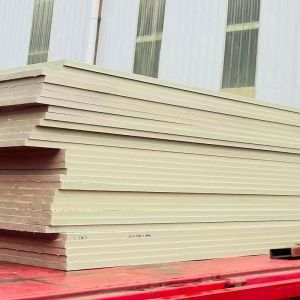| Characteristic | PP (Polypropylene) | PE (Polyethylene) | PVC (Polyvinyl Chloride) |
|---|
| Density (g/cm³) | 0.89-0.91 | 0.91-0.96 (Higher for HDPE, lower for LDPE) | 1.3-1.45 |
| Appearance | Translucent to opaque, relatively hard surface | Translucent to milky white, soft surface with waxy feel | Transparent to opaque, diverse colors (pigment-addable) |
| Hardness | Medium-high, good rigidity | Low (LDPE) to medium (HDPE), good flexibility | Medium-high (rigid PVC); flexibility of soft PVC is adjustable |
| Impact Resistance | Good at room temperature, brittle at low temperatures | Excellent, especially tough at low temperatures (LDPE better) | Poor for rigid PVC at low temperatures; soft PVC has improved
toughness due to plasticizers |
| Tensile Strength (MPa) | 20-40 | 8-30 (Lower for LDPE, higher for HDPE) | 30-50 (rigid PVC), lower for soft PVC |
| Continuous Service Temperature (℃) | 110-120 | -40-80 (About 60 for LDPE, about 100 for HDPE) | -15-60 (rigid PVC), lower for soft PVC (affected by plasticizers) |
| Low-Temperature Resistance | Poor, brittle below 0℃ | Excellent, can withstand below -70℃ (HDPE slightly less
cold-resistant) | Poor, easy to harden and crack at low temperatures |
| Vicat Softening Point (℃) | 150 | 105-130 (Higher for HDPE) | 75-90 (rigid PVC) |
| Acid and Alkali Resistance | Excellent, resistant to most acids, alkalis, salts; not resistant
to aromatic solvents | Excellent, resistant to acids and alkalis; not resistant to strong
oxidants and organic solvents | Resistant to general acids and alkalis; not resistant to
concentrated acids, aromatics, and ketones |
| Solvent Resistance | Poor (easily dissolved by aromatics and chlorinated hydrocarbons) | Medium (LDPE more easily swollen by solvents) | Medium (rigid PVC better than soft PVC) |
| Processing Temperature (℃) | 170-220 | 150-200 (Lower for LDPE, higher for HDPE) | 160-190 (requires stabilizers to prevent decomposition) |
| Weldability | Easy to weld, suitable for heat sealing and ultrasonic welding | Easy to weld, LDPE better than HDPE | Rigid PVC weldable; soft PVC poor due to plasticizer migration |
| Molding Methods | Extrusion, injection molding, blow molding, etc. | Extrusion, injection molding, blow molding, film forming, etc. | Extrusion, injection molding, calendering (soft PVC suitable for
films, pipes) |
| Insulation | Excellent, low dielectric constant, good high-frequency insulation | Excellent, low dielectric loss, suitable for high-frequency
insulation | Good, but rigid PVC better than soft PVC (affected by plasticizers) |
| Toxicity | Non-toxic, meets food contact standards | Non-toxic, meets food contact standards (pure PE) | Rigid PVC itself non-toxic but may contain lead stabilizers; soft
PVC contains plasticizers (phthalates may be harmful) |
| Recyclability | Easy to recycle, can be reprocessed | Easy to recycle, HDPE has higher recycling rate than LDPE | Difficult to recycle, recycled material has significant performance
degradation |
| Typical Uses | Food packaging, pipes, auto parts, medical devices | Films (plastic bags), containers, pipes, toys | Pipes (drainage), profiles (doors/windows), films, artificial
leather |







